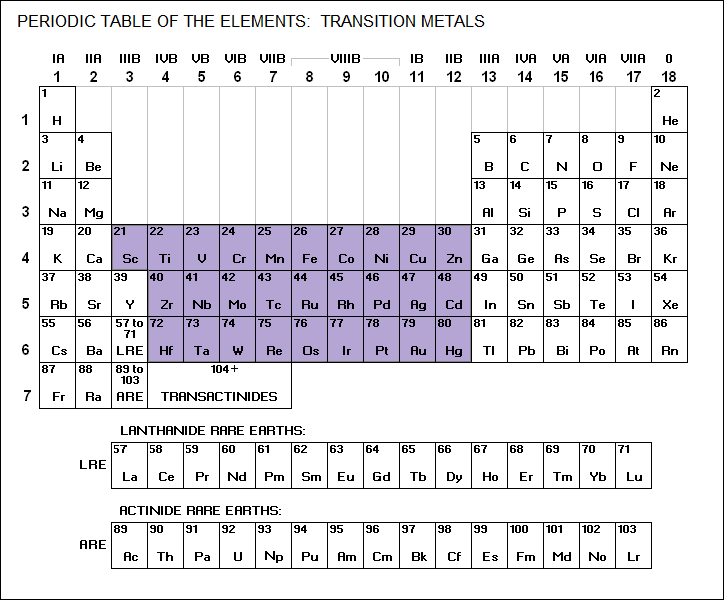
* Cobalt is a member of the transition metals family:

____________________________________________________________________
COBALT / Co / 27
A lustrous, silvery-blue, ferromagnetic metal, with fair resistance
to corrosion. Only one isotope, Co<59/27> is found in nature; it
is stable. The Co<60/27> isotope is highly radioactive, with a
half-life of 5.3 years, and is used as a radiation source.
atomic weight: 58.933200
abundance: 32nd
density: 8.9 gm/cc
melting point: 1,495 C
boiling point: 2,870 C
valence: <2> 3
____________________________________________________________________
The "Co++" ion was once known as the "cobaltous" ion while the "Co+++" was once known as the "cobaltic" ion, but they are now known as "cobalt(II)" and "cobalt(III)" respectively.
Cobalt is a commercially important metal, produced in tens of thousands of tonnes a year, mostly as a byproduct of nickel production. It is used as an alloying metal in some stainless steels, while a very hard alloy of cobalt and tungsten called "stellite" is used in machine tools and barrel linings of machine guns. Another major use of cobalt is in an alloy with aluminum and nickel known logically as "alnico" that has high magnetic strength. Other uses include blue coloring for glass and ceramics, as well as in some types of catalyst.
There were schemes at the height of the Cold War for using cobalt as a component of a "doomsday weapon". The idea was to jacket an ordinary nuclear bomb with a jacket of Co<59/27>; detonation of the weapon would convert the cobalt into radioactive Co<60/27> and disperse it as high-grade fallout. Since the general drive in nuclear weapon design has been to make them cleaner, not dirtier, nobody ever fielded cobalt-jacketed weapons.
